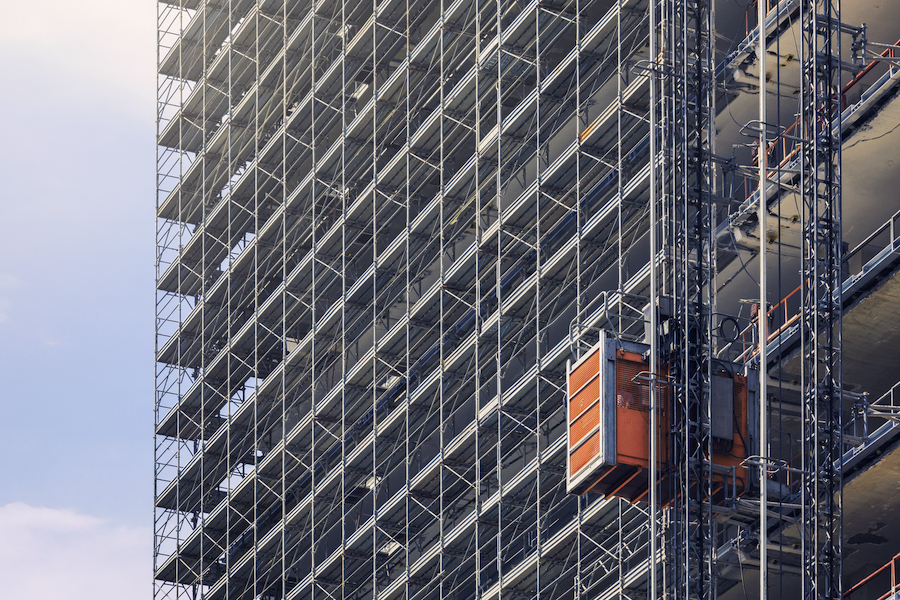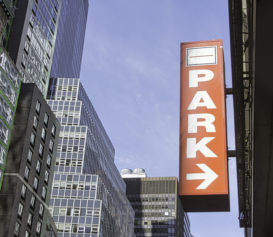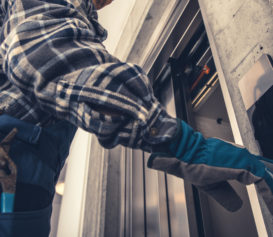The DOB is heading into 2023 with a number of updates including NYC construction changes, elevator requirements, and enhancements to the corrections process. While this update is a longer one, we wanted to make sure you got the full picture of recent changes for agency-related regulations.
If you haven’t yet, you’ll also want to read our rundown of the DOB’s changes for “small businesses,” with an eye towards reducing unnecessary fines and regulatory burdens. Check out the post here.
In the meantime, read on for a round-up summary, and stay tuned for more:
Construction Updates
While construction may be slowing down, construction regulations are still on the rise. Below are a few newer updates you’ll want to be aware of.
As always, make sure you’re staying in good communication with your construction experts. From code consultants to contractors to the explicit roles mentioned below, it’s critical to ensure everyone know what they’re responsible for to stay compliant.
Click each individual link below (next to the + sign) to expand & read more on that topic:
The 2022 Construction Codes featured guidelines for site safety at major buildings, including required roles for specific types of work. Here’s a chart laying out which roles are required at major buildings.
| Scope of Work | Major Building Requirement |
| New Building | Construction Superintendent and Site Safety Manager or Site Safety Coordinator |
| Vertical or Horizontal Enlargements | Construction Superintendent and Site Safety Manager or Site Safety Coordinator |
| Work including full or partial demolition | Construction Superintendent and Site Safety Manager or Site Safety Coordinator |
| Partial demolition limited to interior components and only handheld tools |
Construction Superintendent ONLY |
| Alteration or demolition of more than 50% of gross floor area |
Construction Superintendent ONLY |
| Work including removal of one or more floors | Construction Superintendent ONLY |
| Work including Underpinning | Construction Superintendent ONLY |
| Protection of sides of excavations | Construction Superintendent ONLY |
| Facade work | Site Safety Manager |
Additionally, beginning November 7th:
an individual who is designated as the primary construction superintendent on a major building job may not serve as the primary construction superintendent for any other job. Construction superintendents who are designated on both major building jobs and non-major building jobs can request to be withdrawn from the major job or from the other non-major building jobs; the permit applicant can renew the permit with change to issue the permit with a different construction superintendent; or a request can be submitted to release the site safety requirements from the job, which will also release the construction superintendent.
Per the DOB’s Service Notice, “The site safety requirements in the 2022 Construction Codes will apply to major building site safety projects that have not submitted site safety plans to the Department of Buildings in DOB NOW before November 7, 2022.”
As a reminder, major buildings include existing or proposed building 10 or more stories or 125 feet or more in height, or an existing or proposed building with a building footprint of 100,000 square feet or more regardless of height.
Proposed Changes
While the above changes are already in effect, the DOB has also proposed changes regarding the roles of Site Safety Managers (SSM), Site Safety Coordinators (SSC), Construction Superintendents (CS) and Concrete Safety Managers (CSM).
We’ve outlined the major three changes using abbreviations below:
- Proposed amendments will allow CSMs to hold CS registrations, in addition to SSM and SSC registrations.
- They will also prohibit SSM and SSC roles from “being designated, acting, or serving as the primary or alternate CS at the job for which they are the primary or alternate SSM or SSC or for any other job.”
- Finally, the proposed rules will “prohibit a CSM from simultaneously serving as an SSM, an SSC, or CS on the same job for which they are serving as the CSM.”
Based on the introduction of the proposed rules, these changes aim for two goals: create a process to allow CSMs to register as Construction Superintendents, and “make clear that the duties of a Construction Superintendent are too numerous for a Construction Superintendent to simultaneously serve in other Building Code mandated safety oversight roles at a construction job.” Basically, while people may be able to hold multiple registrations, they may not simultaneously perform certain safety oversight roles at a job.
The hearing for these proposed rules was on October 31, 2022, and changes may occur going forward. We’ll post an update when the proposed rules are adopted and finalized. In the meantime, you can read the full version of the proposed rules here.
Per a recent Service Notice, a “Technical Report (TR1) – Final” will no longer be required for the following work types:
- Sidewalk Shed (SH)
- Construction Fence (FN)
- Supported Scaffold (SS)
- Protection and Mechanical Means (PMM)
Per the DOB, “Submission of a notification of removal will sign off the permit and complete the filing.” Additionally, “A TR Final will no longer appear on new job filings and the TR Final has been removed from existing filings that are not in Letter of Completion status.”
For detailed steps on how to sign off on the above work types, check out the Service Notice.
While this isn’t a change, it’s a great improvement in transparency!
The DOB recently published a guide list of when buildings will receive partial or full Stop Work Orders (SWO), and why. You can view the full list here.
In addition to listing general reasons, the guide also cites the sections of law for each potential SWO issue. While many reasons seem obvious (serious injury or fatality, partial/full site collapse, equipment operated in an unsafe manner, etc.) some are more administrative. For example, Stop Work Orders may be issued for failure to have an onsite Site Safety Log, inadequate or missing construction documents, or failing to have said documents onsite.
If you’re undergoing construction – even if it’s under an LAA – check out this guide and ensure your team is avoiding any of these scenarios.
Bottom line with construction changes? Stay in communication with your responsible roles & onsite staff — ensure your experts are aware of DOB updates, and know their plan to stay compliant.
Elevators & Corrections
In addition to construction updates, changes are coming for elevators and violation corrections.
Click the links below to learn more:
One of the city’s newest rules reflects new elevator standards for maintenance and testing, adopted as of November 7, 2022.
Here’s a quick list of changes:
- Emergency Operation and Signaling Devices: “No device that measures load shall prevent” Phase I Emergency Recall Operation , Phase II Emergency In-Car Operation, and Emergency Operations for Non-Automatic elevators. Additionally, FIRE OPERATION switches and CALL CANCEL buttons shall be in specific locations as designated by the new rule.
- Multicompartment Elevators: A section of rules regarding these devices has been repealed.
- Capacity and Loading: The existing section of rules has been repealed, and replaced with language requiring passenger devices to be “designed with the means to detect if the load exceeds the rated capacity of the elevator. If an overload is detected, the elevator doors shall reopen and remain open and a voice notification and visual signal must indicate that the car is overloaded.”
- Exceptions to Overload Detection: The noted exception to the above is “If Firefighters’ Emergency Operations required in Sections 2.27.3 or 2.27.4 are initiated, the elevator shall operate in accordance with 2.27.3 or 2.27.4.”
- New Rule – Rated Load Performance: This new language references performing periodic tests of passenger devices with loads of up to 100% of the rated load. “When loads exceed 100% of the rated load by not more than 25%, the passenger elevators and freight elevators shall operate in accordance with 2.16.8. The entity performing the Category 5 test must verify compliance with 2.16.10, where required.”
If you have questions about how any of the above impact your devices, we recommend checking in with your elevator consultant. It’s an especially good time to do so, given the many changes we’ve seen in elevator compliance over the past year.
Finally, a new proposed rule regarding Fire Service Access Elevators Annunciators had a recent hearing. The proposed rule clarifies what these are, and why they’re important:
An FSAE is an elevator that remains in service for firefighters to reach the upper levels of a building within a reasonable amount of time and to stage their firefighting operations at a level below the actual fire. An annunciator is a graphic panel which provides visual signals and is used in a building’s fire command center(s) containing one or more indicator lamps, alphanumeric displays or other similar types of display that provide a quick on-site visual reference as to where an alarm or trouble signal is reported within the protected premises. It assists the New York City Fire Department (FDNY) in managing its response at the site of an incident.
The city is looking to align the latest NFPA (National Fire Protection Association) standards with FDNY & DOB regulations. You can read the full proposed rule here – we’ll let you know when it’s set for adoption.
The DOB is now accepting walk-ins for assistance with Certificate of Correction (CoC) requests that have been submitted online.
The Administrative Enforcement Unit (AEU) will meet customers at the DOB’s main offices (280 Broadway, 1st Floor), taking customers in order via service tickets (which you can get onsite Monday – Friday, 8:30 AM – 3:45 PM). In order to get help, folks will need a COC tracking number from DOB NOW:Bis Options. You can see more information about the process here, in the DOB’s most recent service notice.
You can also get help from the AEU during Building After Hours, an event hosted at local borough offices every Tuesday from 4 PM – 7 PM.
Here’s a sneak peek from our upcoming data report on NYC violation trends coming this month: failure to comply & submit Certificates of Correction is the #1 OATH-related infraction from the DOB. It’s critical to ensure Certificates of Correction are filed correctly & promptly to avoid enhanced penalties. If you have questions about a specific violation, definitely take advantage of this latest DOB update. And for steps on how to submit Certificates of Correction online (still mandatory), click here.
If you haven’t yet, be sure to check out our post on the first round of changes for small businesses from the DOB. And stay tuned for updates going into 2023!
Related Articles
About the Author
Kristen Hariton
Kristen Hariton is the Vice President, Product Engagement at SiteCompli, focused on exploring new solutions and innovations in property operations tech. When she's not sharing the latest industry trends, changes, and updates, she's planning her next adventure to Walt Disney World.




